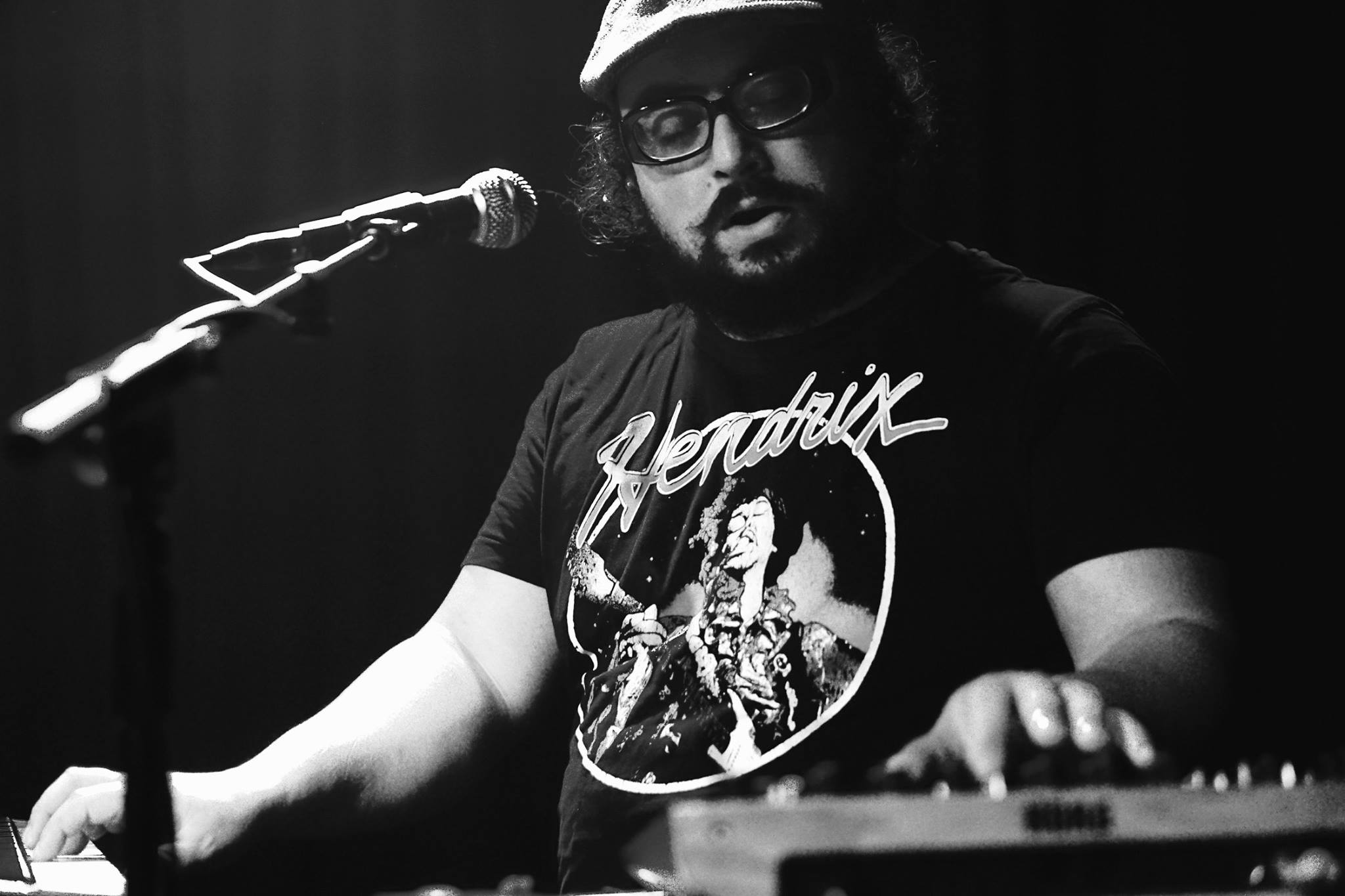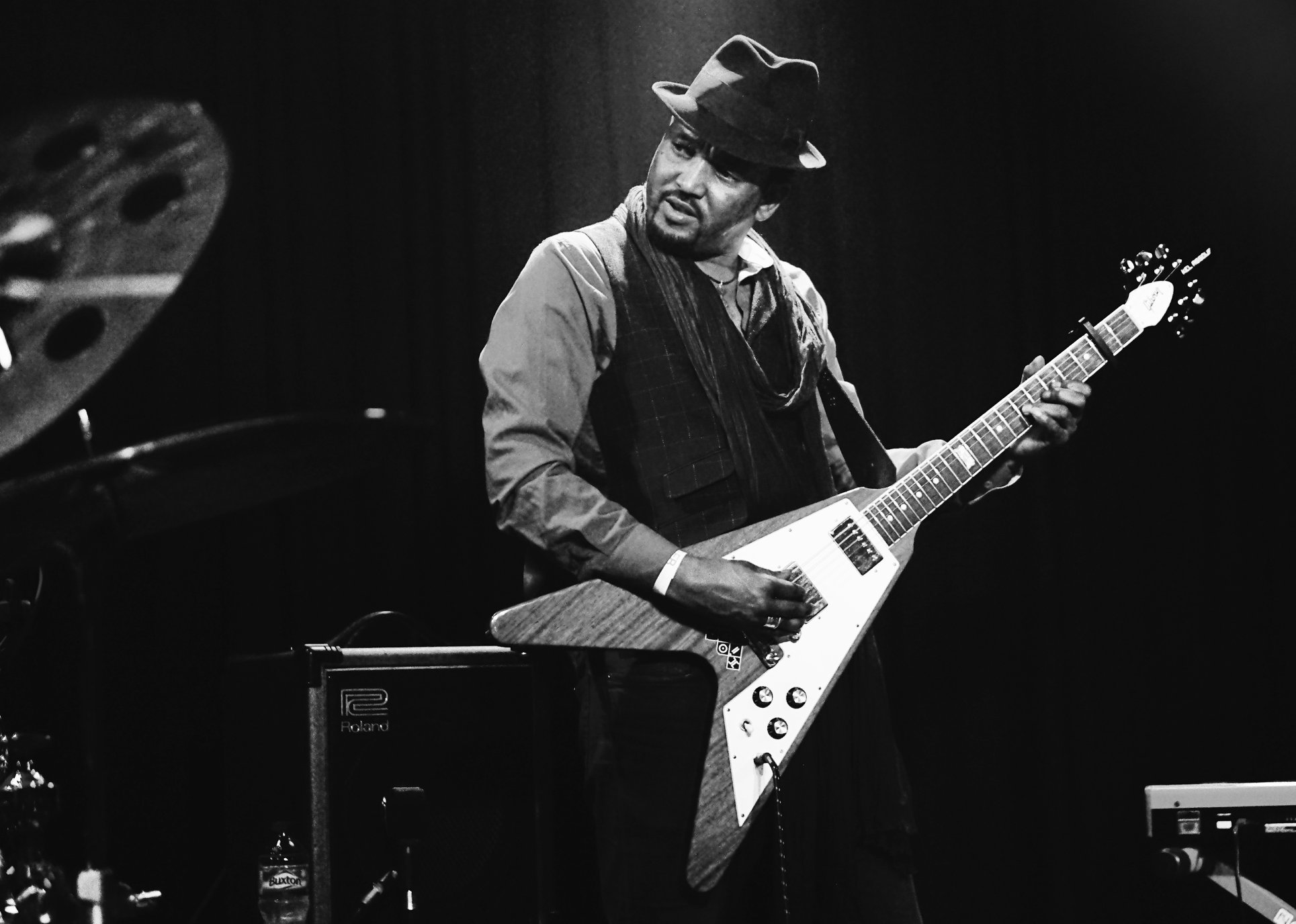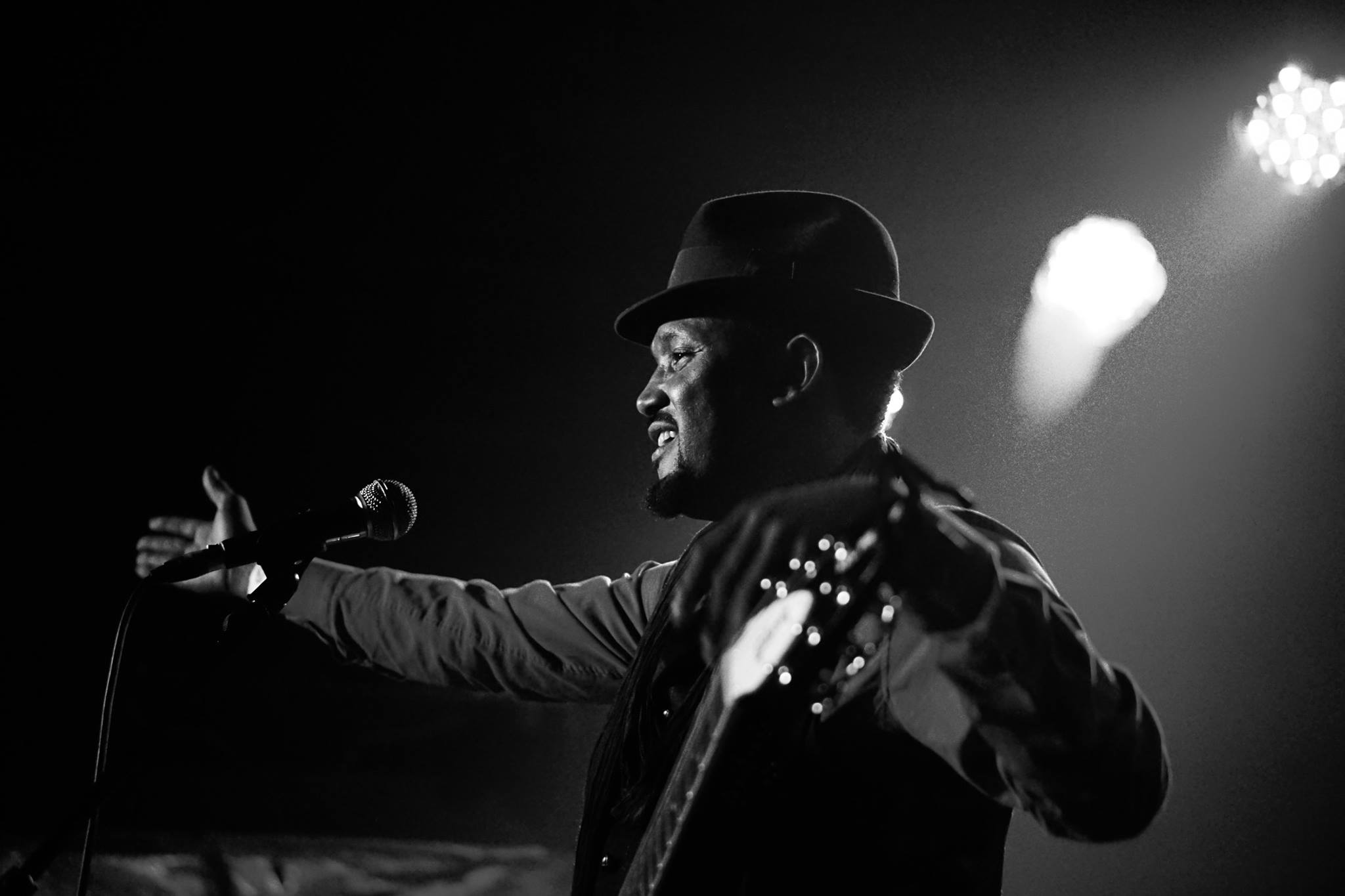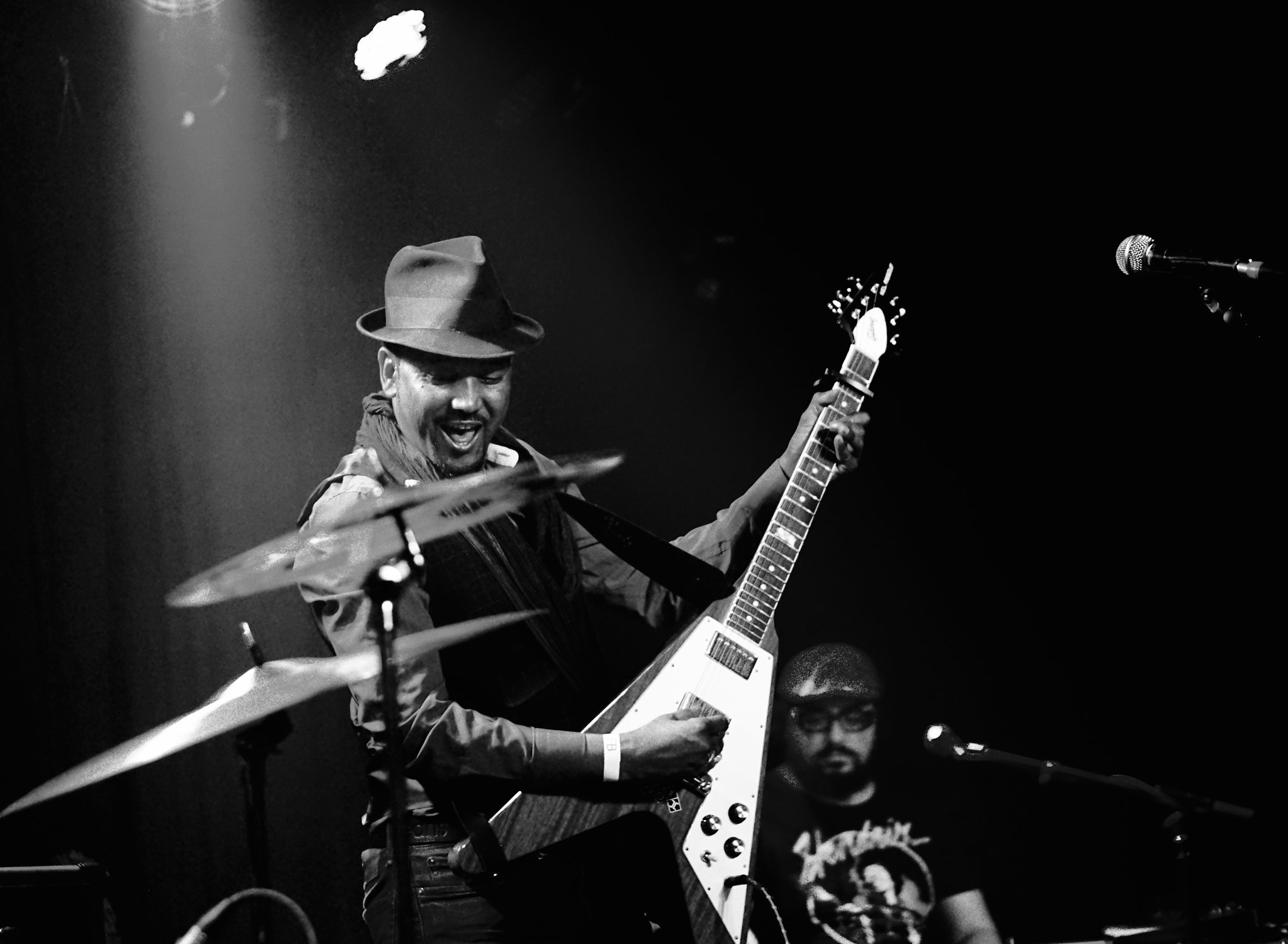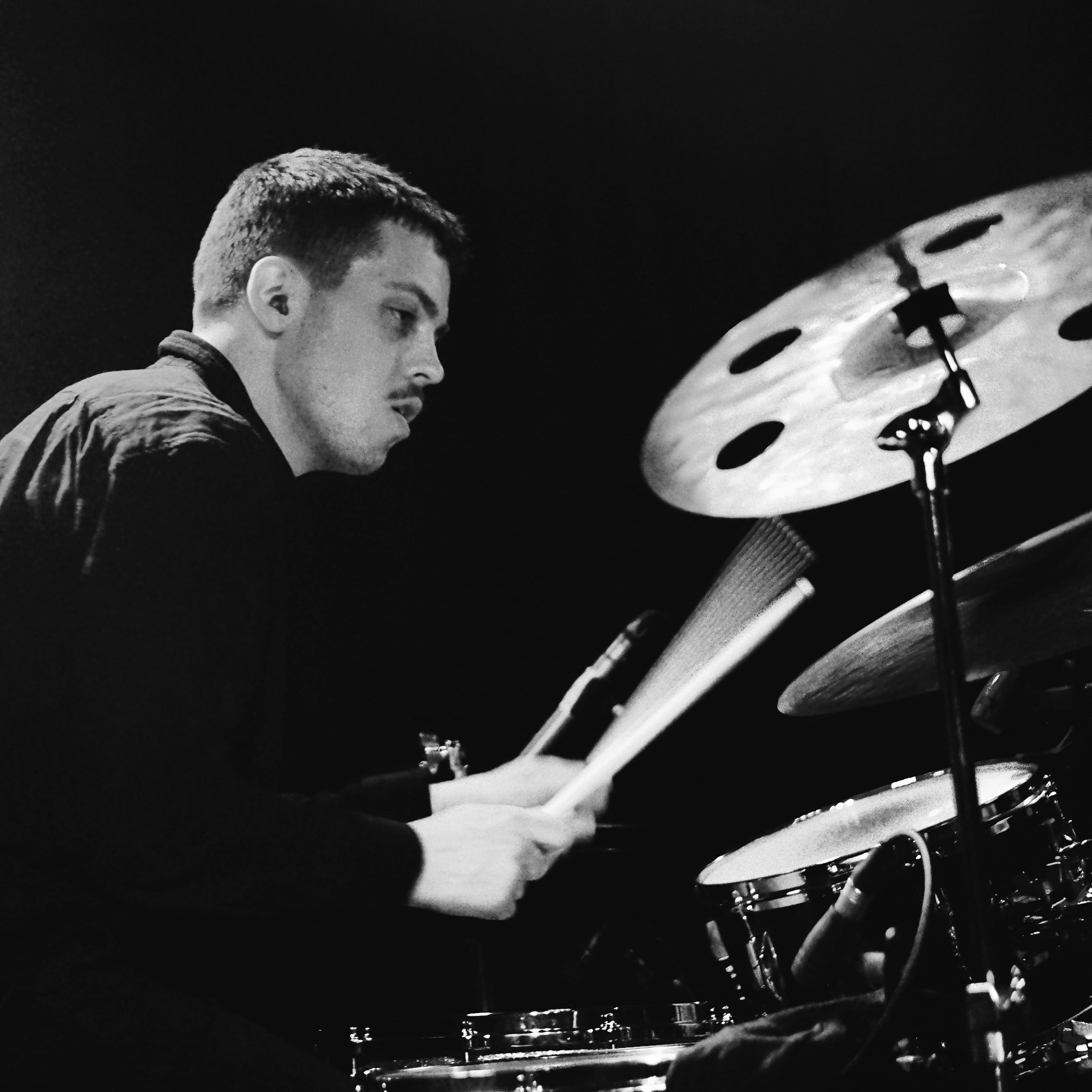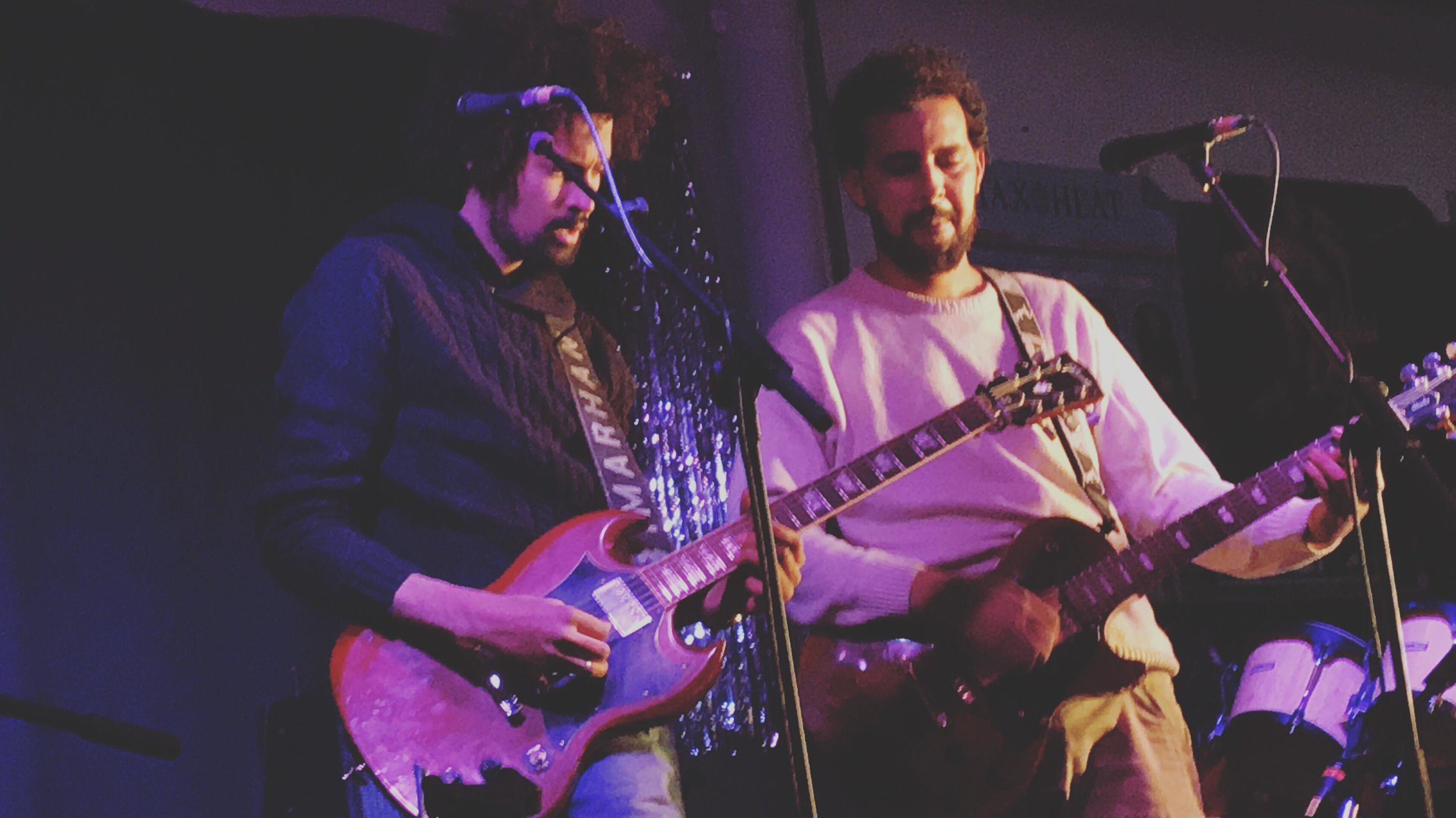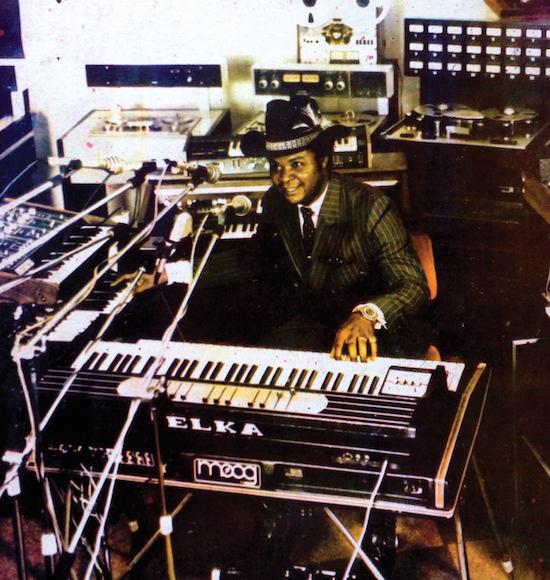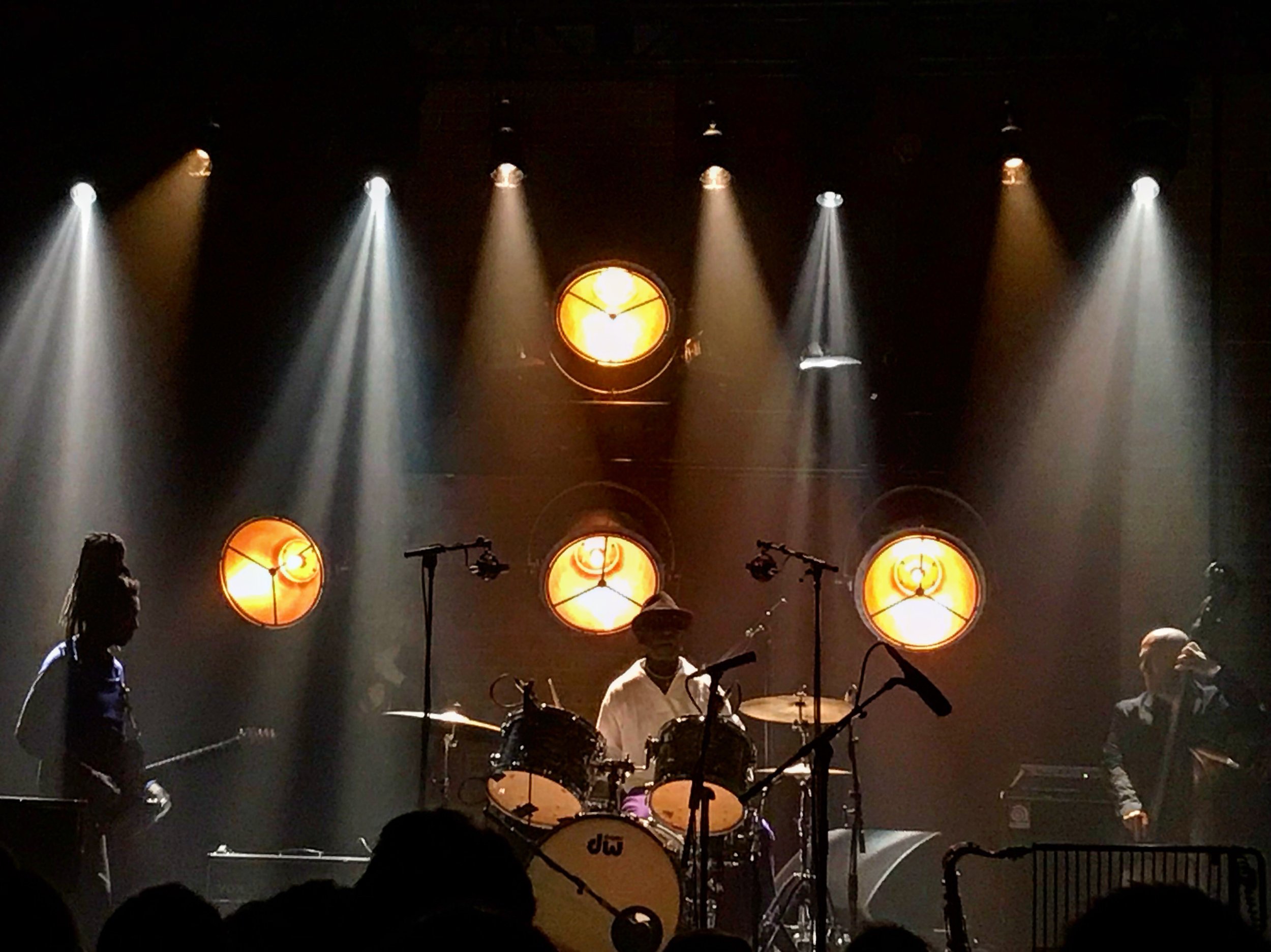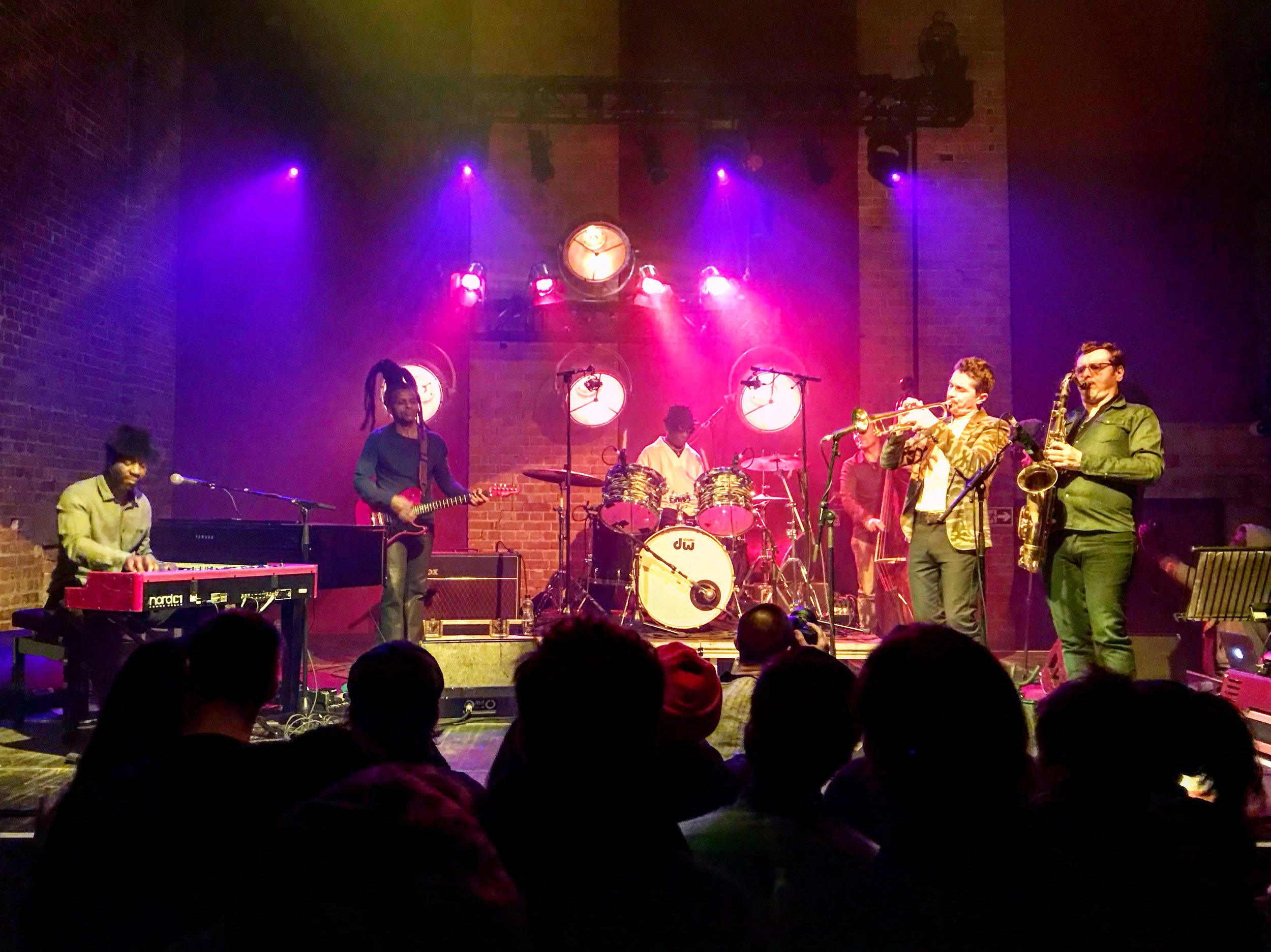22.03.17
Rough Trade (East)
Thursday night saw a special event for Tuareg music lovers, Imarhan, having been hailed the torch bearers for a new generation of Tuareg musicians, bring their mix of traditional Tuareg music, mixed with a little funk and a little disco to East Londons Rough Trade record store.
A warm up show to their sold out headlining gig at the Moth Club Friday, Rough Trade played host to the desert blues band who had travelled all the way from Tamanrasset,, the Southern Algerian part of the Sahara desert that covers much of North Africa.
Tuareg music is a phenomena hailing from the Sahara Desert, specifically Northern Mali. It is blues music played on electric guitar (noticeably often Gibsons), with cyclical riffs and traditional percussion such as hand clapping and a calabash drum and djembes. The lyrics are sung in Tamasheq, the language of the Tuaregs and often depict the struggle of the nomadic Tuaregs, and their fight for autonomy, as well as lyrically standing in solidarity with their social and geographical struggles. The first band to break out of Northern Africa and into the global scene was genre pioneers Tinariwen, who have been since touring the world popularising the Tuareg music in world music scenes globally. Now Tuareg musicians are passionately saught out for festivals the world over.
In 2016 Imarhan released their debut self-titled album on ‘City Slang’ label. Their debut flagged the band as Tuareg band to watch, taking the traditional musicality of Tuareg genre, and adding contemporary flourishes. Such tunes as Tahabort stood out as having particularly groovy riffs on top of all the ingredients to make the music undeniably Tuareg. From this album they toured, building a reputtaiton as an energetic and must book band.
Now in 2018 they are releasing their second album ‘Temet’. This album is focusing lyrically on the coming together of traditional Tuareg with the contemporary, globalised present. The opening song on the album ‘Azzaman’ has a video filmed in Algeria’s capitol Algiers, and depicts this ideology.
Kept slightly under the radar, this Rough Trade concert was added a little last minute and was available for free. On offer however was the opportunity for a meet and greet with the band and a signing session of their new album. Rough Trade therefore were selling the albums on CD and vinyl.
At 7:30 the band came onto the tiny, quiet stage in Rough Trade, a record store that has pushed back all the CD stands to the back of the room to make space for the intimate session. Perhaps less than a hundred people in the room, the band begin.
Their electric guitars immediately echo, playing the signature riffs over and over, with the percussion riding over the top and the fast passed lyrics, almost sounding like a rap over the top. Everyone joins in for the chorus sections, harmonising, and adding impact. They opened the show with ‘Azzaman’ from the new album, and it worked perfectly to warm up the audience.
I sensed the demographic at the concert, were more die hard fans, than wonders, as during the songs, ripples of on beat clapping would start from an individual obviously clapping musically in time with the tunes that must be imbedded in their minds. Then in another song, someone else would succumb to the clapping, and so on and so forth.
After one or two songs, the band seemed to warmed up, and the small area became heavily compact as the audience became hooked on the music. The percussionists moved around with each song, from djembe, to bongos, to calabash and drum kits. Meanwhile each member sung at points with front singer ‘Sadam’ leading the way.
The music was beautifully grooving. Playing songs from both albums such as ‘Imuhagh’, ‘Imarhan’ and ending on the epic ‘Tumast’. In such as small venue, to see such a powerful band projecting their energy so strongly, and playing these guitar riffs that just go on and on. It was an amazing experience, and one I am sure won’t be repeated easily. Given their next show is SOLD OUT at the Moth Club, I doubt we’ll be seeing Imarhan in such a small and intimate venue again.
After a nine songs, their short and sweet set came to an end. The audience had woo-ed, clapped and danced throughout, clearly making the band at ease, as they smiled an urged the remaining audience members to clap the rhythm with the rest of the some-what over excited Tuareg fans, already clapping the percussion.
If you are intersted in Tuareg music, these guys are an imperative name to know. As they are bending the typical format of a Tuareg band, and adding modern twists, groovy licks and funky bass parts.
I thoroughly enjoyed the concert, and appreciate the opportunity to hear the music in such a small place. Also immediately after playing the band headed to the front of the shop for a cigarette in true rock’n’roll style, then sat down to take their time signing and talking to everyone that wanted to pass.
All in all, fantastic band with an priceless new album. Well worth it.
Members: Iyad Moussa Ben Abderahmane (Sadan), Tahar Khaldi, Haiballah Akhamouk, Abdelkader Ourzig, Hicham Bouhasse.
(All photos of Imarhan members LIVE @ Rough Trade, 23/03/18, by Sophie Darling)


